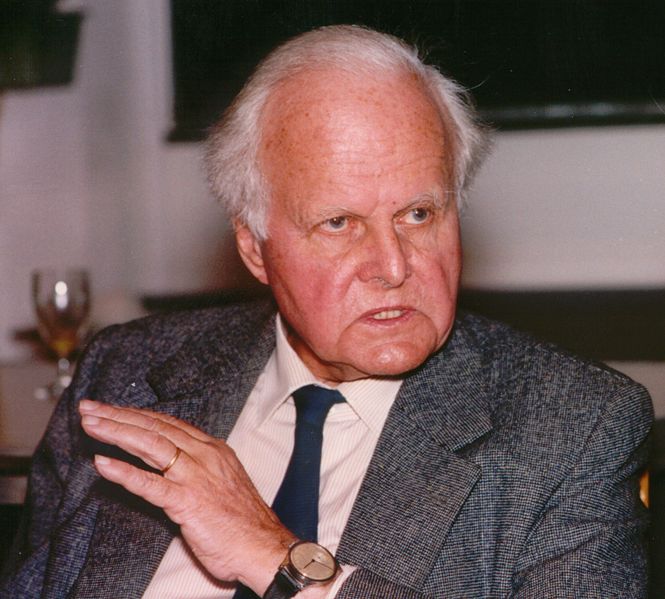Carl Friedrich von Weizsäcker (1912-2007) was a German theoretical physicist, and later philosopher, who worked on Nazi Germany’s atomic bomb program.
EARLY YEARS
Born into German nobility in 1912, Weizsäcker studied physics, astronomy, and math at various German institutions between 1929 and 1933, including the University of Göttingen and Leipzig University. He received his Ph.D. in physics from the latter in 1933 and became a physics professor at the university shortly thereafter. Later, he taught physics at the Kaiser-Wilhelm Institute of Physics and the University of Strasbourg from 1936-1942 and 1942-1944 respectively. During his time in academia, Weizsäcker worked alongside notable scientists such as Werner Heisenberg and Niels Bohr. His early research focused on planetary formation and the energy in stars.
GERMAN ATOMIC BOMB PROJECT
Weizsäcker was involved in the German nuclear weapons program as early as August 1939. Albert Einstein wrote in his famous August 2, 1939 letter to President Franklin D. Roosevelt, “I understand that the son of the German Under-Secretary of State, von Weizsäcker, is attached to the Kaiser-Wilhelm Institute in Berlin where some of the American work on uranium is now being repeated.”
He was among the lead scientists of the Uranverein or “Uranium Club” working on the German atomic bomb project and attended the group’s first meeting in September 1939. Over the course of the war, he researched the means by which German scientists could produce fissionable uranium and plutonium isotopes and drafted two patents, found in Moscow in the 1990s, on methods to generate energy from neutrons.
Weizsäcker conducted his research at both Kaiser-Wilhelm Institute of Physics and the University of Strasbourg. In December 1944, after they captured his Strasbourg laboratory, American forces discovered the Germans had abandoned their atomic bomb program.
Towards the end of the war, Weizsäcker was one of the German scientists interned by the Allies’ Alsos Mission at Farm Hall in England.
LATER YEARS
In 1946 Weizsäcker was released from Farm Hall and repatriated to West Germany. He was appointed Director of the Max Planck Institute’s theoretical physics department, where he served from 1946 to 1957.
Weizsäcker received the Max Planck Medal, the highest award of the German Physical Society, in 1957. That year he was one of the eighteen German scientists to sign the Göttingen Manifesto in opposition to arming West Germany’s army, the Bundeswehr, with tactical nuclear weapons.
Between 1957 and 1969, Weizsäcker served as professor of philosophy at the University of Hamburg. In subsequent years he wrote extensively, publishing more than thirty books, on the moral, ethical, and environmental implications of quantum physics and atomic energy.
In 1970 he founded and directed the Max Planck Institute for Social Sciences in Starnberg where he worked until his retirement in 1980.
Weizsäcker was the longest living member of the Uranium Club. He died on April 28, 2007 at the age of 95 in Starnberg, Bavaria.





